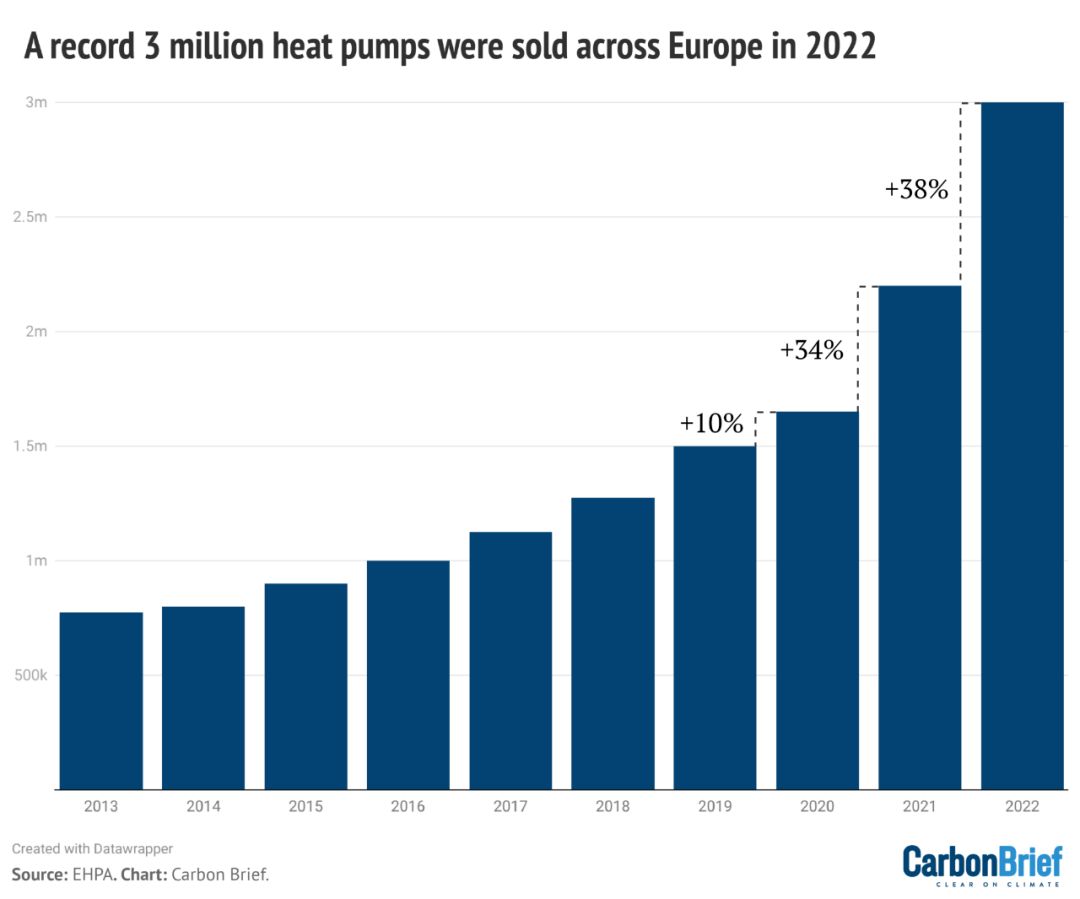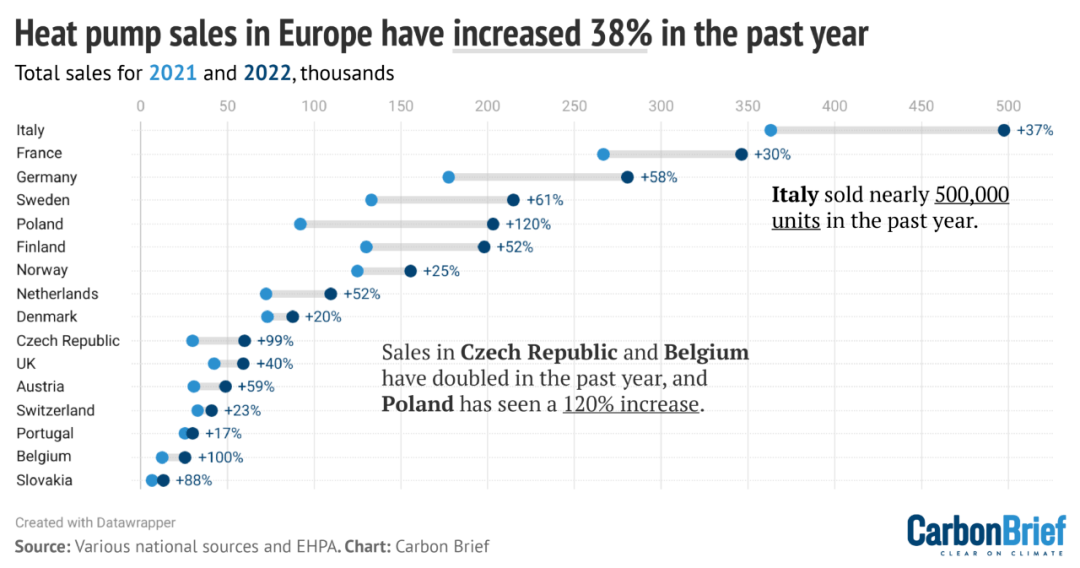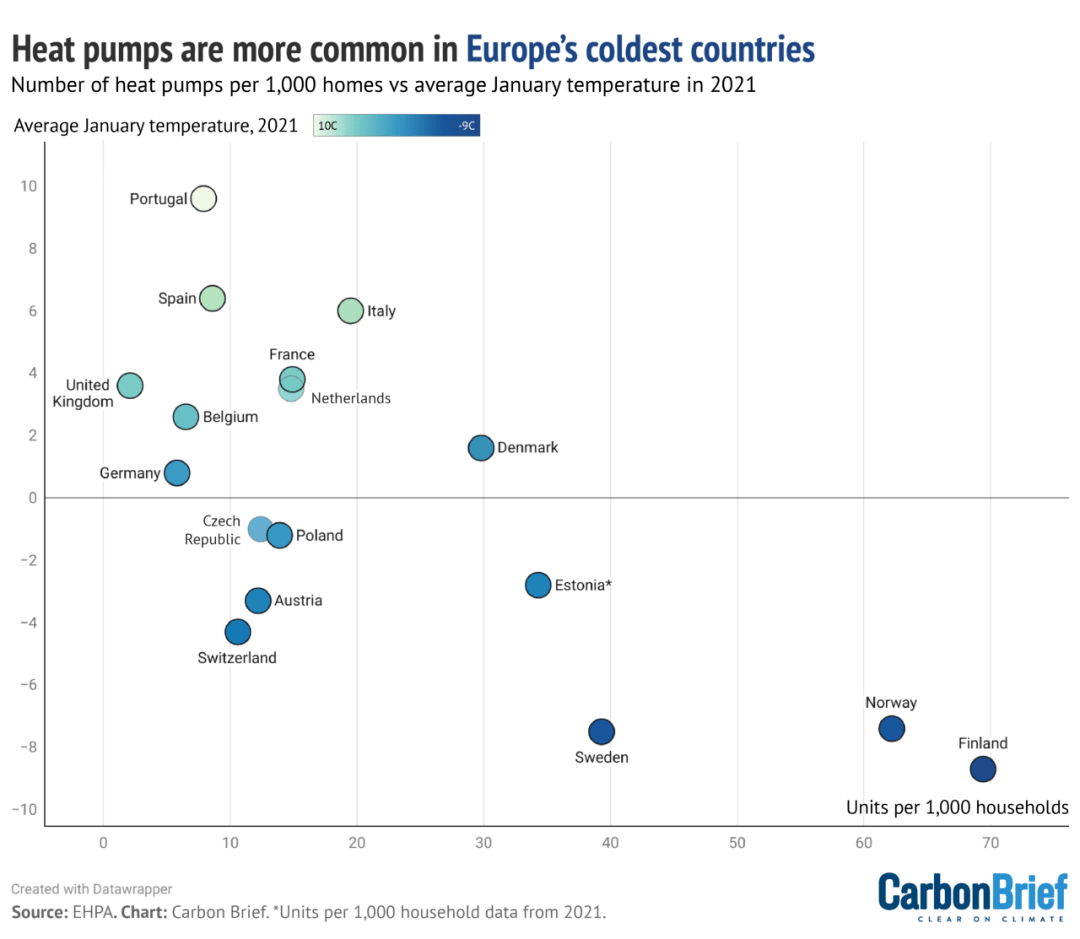the European heat pump market is on fire, and the colder the country, the better the sales
Data: Under the energy crisis, the European heat pump market is on fire, and the colder the country, the better the sales
Heat pumps are widely seen as the most important technology for heating decarbonization and will provide the majority of heating needs in the future with net zero emissions. The energy crisis triggered by the Russo-Ukrainian war and related policy support further promoted the installation of heat pumps in Europe to an unprecedented high. According to the Carbon Brief website, in 2022, European heat pump sales will reach 3 million units for the first time, a year-on-year increase of 800,000 units (38%), doubling since 2019.
The heat pump market in European countries can be divided into three categories: mature heat pump market, emerging heat pump market and dormant heat pump market. Mature markets in Europe include the Nordic countries, Switzerland and France, where heat pumps have long been installed in large numbers and tend to have lower annual growth rates. Emerging market countries include Germany, Poland, and the Netherlands, which have seen a lot of rapid growth recently. Dormant heat pump markets include Ireland, Portugal, and the United Kingdom.

Norway has the highest heat pump penetration rate in the world. About two-thirds of homes now use this technology, which accounts for nearly all new heating systems. However, Norway still sees a 25% increase in heat pump sales in 2022. Germany is one of the largest heating systems markets in Europe, with heat pump sales growing by a record 53% in 2022. An important driver was Germany's announcement that all newly installed heating systems would need to use at least 65% renewable energy by January 1, 2024, two years earlier than originally planned. Rising gas and oil prices may also be contributing to the rise in oil prices. In 2021, Germany implemented a carbon price for natural gas and oil used for heating, which will be raised from the current 30 euros/tCO2 to 45 euros/tCO2 in 2025 to promote the further development of heat pumps.
As can be seen by the geographic distribution of heat pump sales, the evidence disproves the commonly heard myth that heat pumps do not work in cold climates. Although heat pumps are less efficient at the coldest point, performance won't suffer greatly. Data from field tests in Germany show that when the outdoor temperature is -3.6 degrees Celsius, the air-to-water heat pump can still generate more than two heat per unit of electricity. From a technical standpoint, they have an average "coefficient of performance" COP of 2.3. Even at temperatures below -10 degrees Celsius, the COP of the heat pump is 1.6. Likewise, in Finland, air-to-air heat pump systems from different manufacturers were tested with a COP of 3 at -10°C and 2 at -20°C.
